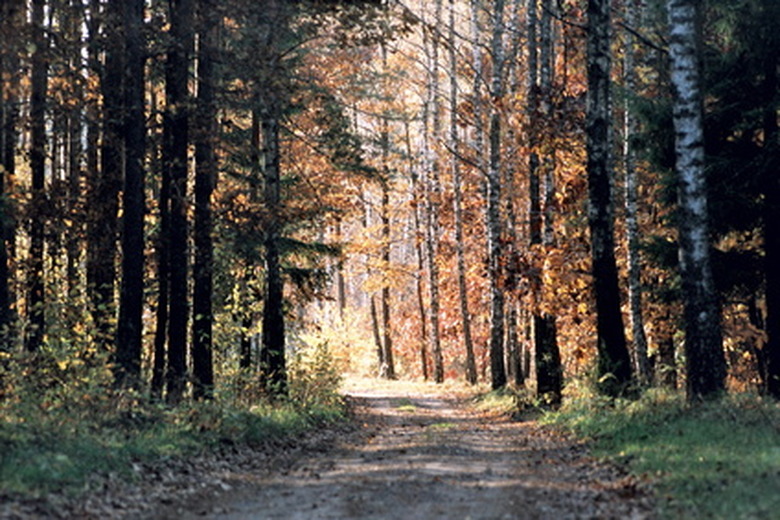Texas Tree Leaf Identification
Trees grow as native plants across the entire state of Texas. The greatest density and diversity of tree types in Texas, however, is found in East and Central Texas, including the West Gulf Coastal Plain (Region 2) and the Oaks and Prairies (Region 3). Identifying a Texas tree successfully involves using a detailed description of its leaves in addition to general information about the growing habits of the tree and its location.
Arrangement
The arrangement of tree leaves on the twig or branch is one piece of data that points to identification. Leaves may alternate on either side of the stem at different heights. On the other hand, leaves may be opposite one another at the same level on the twig. Whorled leaves are arranged with several leaves—three or four—at the same level. Crape Myrtle, a Texas favorite tree or shrub, has opposite leaves close to the trunk and may have whorled leaves at the end of a shoot.
- Trees grow as native plants across the entire state of Texas.
- Crape Myrtle, a Texas favorite tree or shrub, has opposite leaves close to the trunk and may have whorled leaves at the end of a shoot.
Shape
The names of leaf shapes are often descriptive. Elliptical leaves are oval and longer than they are wide, and they are shaped evenly around the center. Ovate leaves are egg shaped with the base wider than the end or apex of the leaf. The Cedar Elm that grows in North Texas has ovate leaves. A heart-shaped leaf, called cordate, has a wide base with a notch where the leaf attaches to the stem and is triangular. Hastate leaves are sharply notched on both sides and wider at the base. The notches may be deep enough to appear as separate leafs without close inspection. Lanceolate leaves are narrow, spear shaped and triangular.
- The names of leaf shapes are often descriptive.
- Elliptical leaves are oval and longer than they are wide, and they are shaped evenly around the center.
Edge
The five common leaf edge types are lobed, serrate, dentate, sinuate and entire. Lobed leaves have smooth edges with large divisions or indents that go almost to the center of the leaf. Texas native oaks have lobed leaves. The depth of the indention separates lobed leaves from sinuate leaves, which also have undulating edges but shallower indentations. Dentate and serrate leaf edges have the appearance of small teeth; serrated leaf edges, however, are sawlike and point upward, whereas dentate leaves' teeth are more even in size and tend to point outward. Entire leaves have a smooth edge.
Veins
Leaf veins may be parallel, pinnate or palmate. Parallel veins are equidistant and straight. Pinnates have a center vein with smaller side veins growing from the center toward the edge and angling upward. Palmates are shaped like the palm of a hand; larger veins are on each section with small veins radiating from each large vein. Texas Sabal Palm is an example of a palmate-leafed tree.
- The five common leaf edge types are lobed, serrate, dentate, sinuate and entire.
- Lobed leaves have smooth edges with large divisions or indents that go almost to the center of the leaf.
Color
Even on a single tree, the color of leaves change with the seasons. Therefore, color is less effective for tree leaf identification than leaf arrangement, shape and edges. Noting the general color of a tree's leaves in summer, however, such as light green, shiny green, dark green or gray-green, may help in making a correct identification of a tree in Texas.
